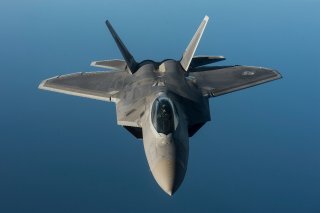Abdul Moiz Khan

In the 1990s, the U.S. Department of Defense put forward a new military doctrine called Network-Centric Warfare (NCW). The objective was to integrate emerging tactics, techniques, and procedures to bolster the warfighting capabilities of the military. To achieve this end, transforming information into combat power is critical. The Internet of Things, or IoT, refers to all those devices that are today connected to the internet and are sharing and collecting data. Real-time data collection and its analysis with the help of Artificial Intelligence (AI) is the main feature of IoT. Thus, the military application of IoT can be a breakthrough moment for Network-Centric Warfare.
Network-Centric Warfare’s doctrine seeks the integration of three domains: the physical domain, where events took place and operations are conducted; the information domain, where data is transmitted and stored; and the cognitive domain, where data is processed and analyzed. D.S. Alberts and other experts on the subject defined Network-Centric Warfare as “an information superiority-enabled concept of operations that generates increased combat power by networking sensors, decision-makers, and shooters to achieve shared awareness, increased speed of command, higher tempo of operations, greater lethality, increased survivability, and a degree of self-synchronization. In essence, NCW translates information superiority into combat power by effectively linking knowledgeable entities in the battlespace.” This military doctrine ignited a revolution in military affairs.
NCW brings many advantages to the table. It improves situational awareness at every level of the command structure. This in turn increases the speed of execution, as even the smallest tactical unit possesses the information. It can reduce collateral damage during a battle. At the logistical level, NCW can provide real-time data about the need for material supplies and can coordinate effectively to streamline the supply chains. It also helps in formulating joint force structures because of the real-time information sharing from tactical and strategic levels and a better communication channel that enhances the abilities of command and control structures.
An example of NCW in action is Operation Iraqi Freedom, undertaken by the United States and its allies. Despite being numerically weaker, the United States and its allies trampled the Iraqi forces with the help of its technologically advanced weapons and warfare systems. Prior information of important military targets through satellites and GPS combined with sensor-shooter integration increased the precision of weapons. Also, instant communication, along with GPS and laser targeting, provided the option of calling airstrikes at precise locations at a moment’s notice by the ground forces. K-Web, or knowledge wall, was one of the most important components of this war. It was a large screen display panel that had information about each warfighting and support unit. It was used effectively for planning, briefing, and executing plans by accumulating all the possible data. These are just some of the systems that changed the whole idea of warfare and unleashed the power of technology.
However, there are a few shortcomings with NCW that need to be addressed to further harness the potential of this revolution in military affairs. One shortcoming is that it is resource intensive. It is not easy to procure, and its research and design can take years. Another major shortcoming is that conventional systems lack automation. A huge chunk of data is collected in real-time during a conflict from different sources. However, many data integration systems rely on manual data entry systems. Similarly, processing this huge swath of data manually is a hurdle. This is where IoT will come into play. It is cost-effective and automated, which will make it a valuable component of NCW military systems.
In this “information age,” technological advancements are shaping the world at a very fast pace. IoT has an impact on every aspect of human life, as it is a network of physical devices that can be in any form, including home appliances, smart gears, actuators, and software for connectivity and data exchange. The number of IoT devices is increasing day by day as more devices are being connected to the internet. At the end of 2021, the total number of active IoT devices was estimated to be around 12.2 billion, more than the total human population.
IoT is being utilized in all spheres of life, from medical to the military. In the domain of the military, it is deployed for combat purposes, including Command, Control, Communications, Computers, Intelligence, Surveillance and Reconnaissance (C4ISR); in fire control systems, delivering devastating firepower; in security systems based on facial, or iris, or fingerprint or radio-frequency identification (RFID) technology; in training and simulation exercises; and electronic warfare.
The utilization of IoT for NCW can be very beneficial for the latter. IoT systems are far cheaper than the traditional systems that were used for real-time data collection. Situation awareness is one of the central aspects of NCW. For this, real-time data is collected, shared, and reprocessed at the same time to gather information and formulate strategy. IoT devices are not only cheaper but also more efficient. The IoT systems collect real-time data about the systems themselves, submeter data, and environmental data. The second utility IoT systems have is automation. They can collect, share, and reprocess large swaths of data without human help. This will have two advantages for NCW. First, large amounts of data will be reprocessed quickly, thus decreasing the response time and increasing efficacy. Second, it will decrease the human burden and free people for other tasks.
IoT is an advanced technology, and with the revolution in military affairs, it will have a far-reaching impact on the battlefield. It has solved a few shortcomings of NCW and augmented many of its capabilities, thus increasing its efficacy. With the speed at which Operation Enduring Freedom and Operation Iraqi Freedom took place two decades ago, we can envisage what the future has in store.
No comments:
Post a Comment